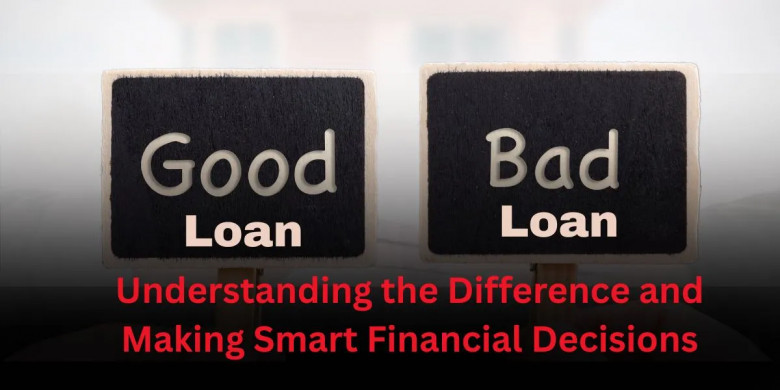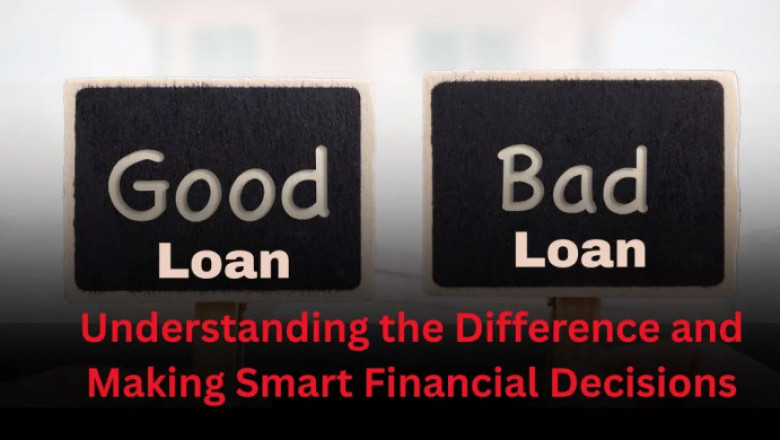Does Credit Card debts bother you?
Are you someone who is burdened by very high interest rates on credit card dues?Then don’t worry Loan Relief team is here for you to help you out of this problem.
Are you someone who is burdened by very high interest rates on credit card dues?Then don’t worry Loan Relief team is here for you to help you out of this problem.
Introduction
Loans have become an essential part of modern life. Whether it’s buying a house, starting a business, or funding higher education, borrowing money helps people achieve their goals. However, not all loans are created equal. Some loans can boost your financial health, while others can lead to a debt trap. So, how do you differentiate between a good loan and a bad loan? More importantly, how can you ensure that you’re making the right borrowing decisions? In this article, we’ll break down everything you need to know about good and bad loans so you can borrow wisely.
What is a Loan?
A loan is a sum of money borrowed from a lender (such as a bank or financial institution) with an agreement to repay it over time, usually with interest. Loans can be classified into:
Types of Loans:
Secured Loans – Backed by collateral (e.g., home loans, car loans).
Unsecured Loans – No collateral required but usually has higher interest rates (e.g., personal loans, credit cards).
Fixed-Rate Loans – Interest rate remains the same throughout the tenure.
Variable-Rate Loans – Interest rate fluctuates based on market conditions.
What is a Good Loan?
A good loan is one that adds value to your financial life and helps you build wealth over time. It is taken for productive purposes and comes with reasonable interest rates and manageable repayment terms.
Examples of Good Loans:
✅ Home Loan – Helps in acquiring property, which appreciates over time.
✅ Student Loan – Invests in education, leading to better career opportunities.
✅ Business Loan – Funds startups or business expansion, generating income.
Why Good Loans Are Beneficial?
- Helps build credit history and improves your credit score.
- Used for assets that appreciate in value over time.
- Comes with reasonable repayment terms and lower interest rates.
What is a Bad Loan?
A bad loan is one that creates a financial burden without offering any long-term benefits. These loans often have high-interest rates, short repayment periods, and hidden charges.
Examples of Bad Loans:
- ❌ Payday Loans – Short-term, high-interest loans that lead to a debt cycle.
- ❌ High-Interest Personal Loans – Taken for unnecessary expenses, such as luxury items or vacations.
- ❌ Credit Card Debt – Revolving debt with high-interest rates that can quickly accumulate.
Why Bad Loans Are Harmful?
- Leads to financial stress and unmanageable debt.
- High-interest rates make repayment difficult.
- Damages your credit score if payments are missed.
Key Differences Between Good Loans and Bad Loans
| Feature | Good Loan | Bad Loan |
|---|---|---|
| Purpose | Investment in assets (home, education, business) | Unnecessary spending (luxuries, high-risk investments) |
| Interest Rates | Low to moderate | High, sometimes excessive |
| Financial Impact | Builds wealth | Creates financial burden |
| Loan Tenure | Long-term | Short-term with high penalties |
| Risk Factor | Low | High |
Factors That Determine Whether a Loan is Good or Bad
- Interest Rates – Lower interest rates make a loan more manageable.
- Purpose of Loan – Borrowing for income-generating assets is beneficial.
- Repayment Ability – Taking a loan beyond your financial capacity leads to trouble.
How to Avoid Falling into a Bad Loan Trap?
- Read the fine print – Understand loan terms, interest rates, and hidden fees.
- Avoid payday loans and high-interest personal loans unless absolutely necessary.
- Borrow only what you need, not what you qualify for.
How to Make the Most Out of a Good Loan?



Today's Top Posts
-
![Precision Aquaculture Market Enhancing Sustainable Seafood Production with Advanced Technology and Data-Driven Solutions]() 26
26 Precision Aquaculture Market Enhancing Sustainable Seafood Production with Advanced Technology and Data-Driven Solutions
-
![The Ultimate Guide to Cambodia Visa: Standard and Urgent Processing Options]() 22
22 The Ultimate Guide to Cambodia Visa: Standard and Urgent Processing Options
-
![Crafting First Impressions: A.Rrajani’s Signature Portfolio Photography]() 19
19 Crafting First Impressions: A.Rrajani’s Signature Portfolio Photography
-
![Real Estate Trends Near Sector 58, Noida in 2025]() 17
17 Real Estate Trends Near Sector 58, Noida in 2025
-
![Real Estate Trends Near Ramohalli, Bengaluru in 2025]() 15
15 Real Estate Trends Near Ramohalli, Bengaluru in 2025
-
!["Fleurimont Plancher: Leading the Way in High-Quality Ceramic Flooring Solutions"]() 15
15 "Fleurimont Plancher: Leading the Way in High-Quality Ceramic Flooring Solutions"
-
![Top Ranked Industrial RO Plant Manufacturer In Delhi]() 13
13 Top Ranked Industrial RO Plant Manufacturer In Delhi
-
![Top 5 Loan Settlement Companies in India – Your Guide to Financial Freedom]() 13
13 Top 5 Loan Settlement Companies in India – Your Guide to Financial Freedom
-
![Ράφια Ημιβαρέως Τύπου: Ευελιξία και Αντοχή για Κάθε Αποθήκη]() 11
11 Ράφια Ημιβαρέως Τύπου: Ευελιξία και Αντοχή για Κάθε Αποθήκη
-
![Enhance Employee Experience with Digital Workplace Services]() 11
11 Enhance Employee Experience with Digital Workplace Services












Comments
0 comment